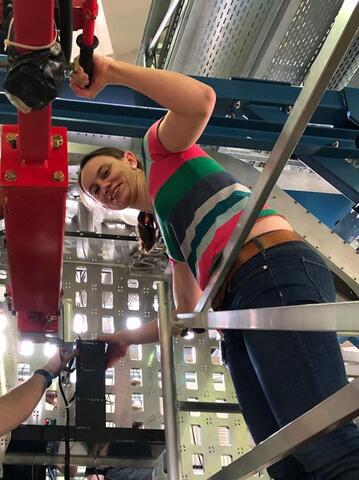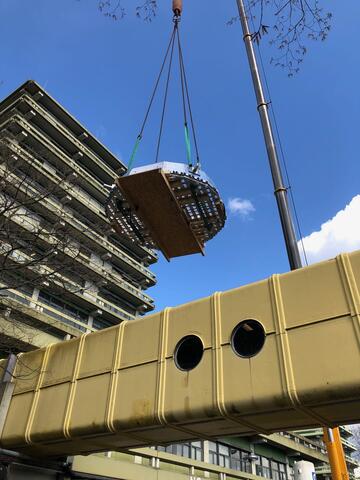Workshop „Physics Opportunities with Proton Beams at SIS100” was held in Wuppertal
PANDA meetings
04/03-08/03 2024 CM 24/1 in Münster
24/06-28/06 2024 CM 24/2 at GSI
25/06-26/06 2024 FEE/DAQ Workshop
04/11-06/11 2024 CM 24/3 at GSI
05/03-07/03 2025 WS at GSI
16/06-20/06 2025 CM 25 in Uppsala
The PANDA Barrel DIRC Detector at FAIR
Roman Dzhygadlo
TA-CON-2018-069.pdf
(2.72 MB)
TA-CON-2018-069.pdf
(4.78 MB)
Carsten Schwarz
The PANDA experiment at the international accelerator Facility for Antiproton and Ion Research in Europe (FAIR) near GSI, Darmstadt, Germany will address fundamental questions of hadron physics. Excellent Particle Identification (PID) over a large range of solid angles and particle momenta will be essential to meet the objectives of the rich physics program. Charged PID for the barrel region of the PANDA target spectrometer will be provided by a DIRC (Detection of Internally Reflected Cherenkov light) detector.
The PANDA Barrel DIRC is designed to cover the polar angle range of 22-140 degrees and separate charged pions from kaons for momenta between 0.5 GeV/c and 3.5 GeV/c with a separation power of at least 3 standard deviations. The design is based on the successful BABAR DIRC and the SuperB FDIRC R&D with several important improvements to optimize the performance for PANDA, such as a focusing lens system, fast timing, a compact fused silica prism as expansion region, and lifetime-enhanced Microchannel Plate PMTs for photon detection.
Detailed Monte-Carlo simulations were performed and two reconstruction methods were developed to study the performance of the design.
We will discuss the technical design of the PANDA Barrel DIRC, based on narrow bars made of synthetic fused silica and a complex multi-layer spherical lens system and present the result of tests of a large system prototype with a mixed hadron beam at CERN
The PANDA Barrel DIRC is designed to cover the polar angle range of 22-140 degrees and separate charged pions from kaons for momenta between 0.5 GeV/c and 3.5 GeV/c with a separation power of at least 3 standard deviations. The design is based on the successful BABAR DIRC and the SuperB FDIRC R&D with several important improvements to optimize the performance for PANDA, such as a focusing lens system, fast timing, a compact fused silica prism as expansion region, and lifetime-enhanced Microchannel Plate PMTs for photon detection.
Detailed Monte-Carlo simulations were performed and two reconstruction methods were developed to study the performance of the design.
We will discuss the technical design of the PANDA Barrel DIRC, based on narrow bars made of synthetic fused silica and a complex multi-layer spherical lens system and present the result of tests of a large system prototype with a mixed hadron beam at CERN





